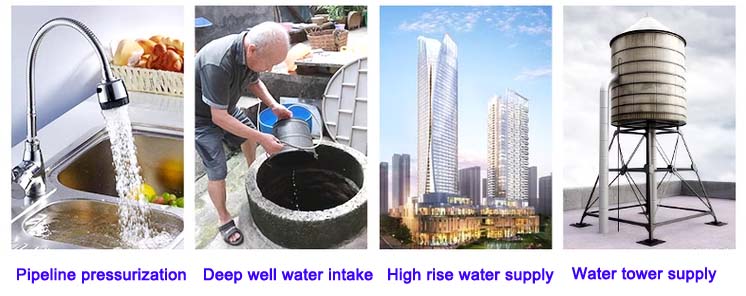English
- Afrikaans
- Albanian
- Amharic
- Arabic
- Armenian
- Azerbaijani
- Basque
- Belarusian
- Bengali
- Bosnian
- Bulgarian
- Catalan
- Cebuano
- Corsican
- Croatian
- Czech
- Danish
- Dutch
- English
- Esperanto
- Estonian
- Finnish
- French
- Frisian
- Galician
- Georgian
- German
- Greek
- Gujarati
- Haitian Creole
- hausa
- hawaiian
- Hebrew
- Hindi
- Miao
- Hungarian
- Icelandic
- igbo
- Indonesian
- irish
- Italian
- Japanese
- Javanese
- Kannada
- kazakh
- Khmer
- Rwandese
- Korean
- Kurdish
- Kyrgyz
- Lao
- Latin
- Latvian
- Lithuanian
- Luxembourgish
- Macedonian
- Malgashi
- Malay
- Malayalam
- Maltese
- Maori
- Marathi
- Mongolian
- Myanmar
- Nepali
- Norwegian
- Norwegian
- Occitan
- Pashto
- Persian
- Polish
- Portuguese
- Punjabi
- Romanian
- Russian
- Samoan
- Scottish Gaelic
- Serbian
- Sesotho
- Shona
- Sindhi
- Sinhala
- Slovak
- Slovenian
- Somali
- Spanish
- Sundanese
- Swahili
- Swedish
- Tagalog
- Tajik
- Tamil
- Tatar
- Telugu
- Thai
- Turkish
- Turkmen
- Ukrainian
- Urdu
- Uighur
- Uzbek
- Vietnamese
- Welsh
- Bantu
- Yiddish
- Yoruba
- Zulu
Telephone: +86 13120555503
Email: frank@cypump.com
Dec . 05, 2024 12:24 Back to list
Choosing the Right Basement Sewage Ejector Pump for Your Home Needs
Understanding Basement Sewage Ejector Pumps
When it comes to plumbing systems in homes, especially those with basements, many homeowners may not fully understand the importance and function of a sewage ejector pump. This crucial piece of equipment is designed to manage wastewater from basement bathrooms, laundry rooms, and other areas located below the main sewer line. In this article, we’ll explore what sewage ejector pumps are, how they work, and why they are essential for homes with lower-level plumbing.
What is a Sewage Ejector Pump?
A sewage ejector pump is a specialized pump installed within a sump pit in the basement. Its primary function is to transport sewage and wastewater from areas below the level of the main sewer line up to the municipal sewer system or septic tank. Unlike standard sump pumps that deal primarily with groundwater, sewage ejector pumps handle much more viscous and solid waste.
These pumps are typically used in homes with bathrooms, kitchens, or laundry facilities in the basement, where gravity alone cannot allow wastewater to flow naturally to the sewer line. Therefore, a sewage ejector pump is necessary to manage and expel waste in an efficient manner.
How Does it Work?
The operation of a sewage ejector pump is relatively straightforward. A sump basin is installed in the basement, where wastewater collects. When the level of waste reaches a set height, a float switch activates the pump. The pump then begins to draw the sewage from the pit and expels it through pipes that lead to the main sewer line or septic system.
Most sewage ejector pumps are designed with a powerful motor that can handle not only liquid waste but also solid materials. They often incorporate features such as grinder pumps, which chop solid waste into smaller pieces, facilitating easy transport through the plumbing system. Typically, they are automatic, meaning that once installed and connected, they will operate as needed without requiring manual intervention.
basement sewage ejector pump

Why are Sewage Ejector Pumps Important?
1. Prevention of Backups One of the primary reasons for having a sewage ejector pump is to prevent sewage backups in the home. When wastewater cannot flow out due to elevation issues, it can lead to unsanitary conditions and potential damage. By using an ejector pump, homeowners can avoid the unpleasant and harmful consequences of sewage overflow.
2. Enhanced Property Value Having a functional basement—complete with bathrooms and laundry—can significantly enhance the value of a property. Homebuyers appreciate the utility of a finished basement, and a sewage ejector pump makes such spaces practical by ensuring proper waste management.
3. Efficient Waste Management Sewage ejector pumps efficiently manage waste in multiple fixtures, making them invaluable for homes with several plumbing installations on lower levels. They streamline waste removal, reducing the risk of clogging and plumbing issues.
4. Peace of Mind Installing a sewage ejector pump gives homeowners peace of mind, knowing that their waste management system will function adequately, even in challenging situations. Whether due to heavy rain causing groundwater issues or regular household usage, the pump works tirelessly to manage waste effectively.
Conclusion
A basement sewage ejector pump might not be the most glamorous feature of a home, but it is undeniably important for ensuring proper sanitation and functionality, especially in homes with lower-level plumbing. By understanding how these systems work and their necessity, homeowners can make informed decisions about their plumbing needs, ensuring a clean and safe living environment. Investing in a reliable sewage ejector pump could save you from costly repairs and health risks associated with wastewater problems—making it a worthwhile addition to any home with a basement.
-
Horizontal Split Case Pump with GPT-4 Turbo | High Efficiency
NewsAug.01,2025
-
ISG Series Pipeline Pump - Chi Yuan Pumps | High Efficiency, Durable Design
NewsAug.01,2025
-
Advanced Flue Gas Desulfurization Pump with GPT-4 Turbo | Durable & Efficient
NewsJul.31,2025
-
ISG Series Vertical Pipeline Pump - Chi Yuan Pumps | Advanced Hydraulic Design&Durable Construction
NewsJul.31,2025
-
ISG Series Vertical Pipeline Pump - Chi Yuan Pumps | Energy Efficient & Low Noise
NewsJul.31,2025
-
pipeline pump - Chi Yuan Pumps Co., LTD.|High Efficiency&Low Noise
NewsJul.31,2025










